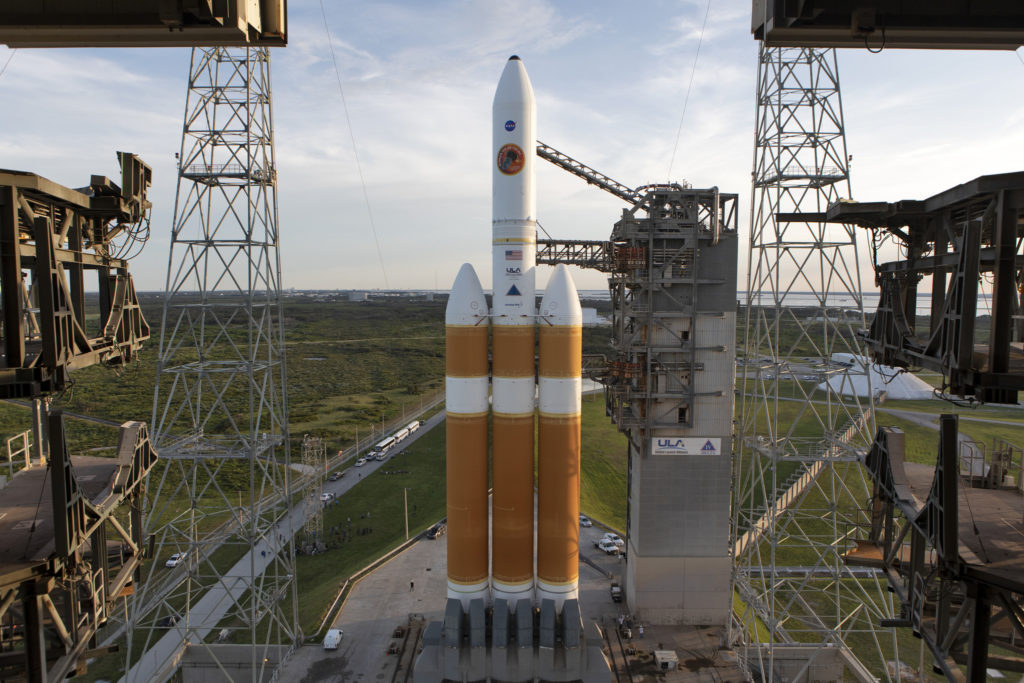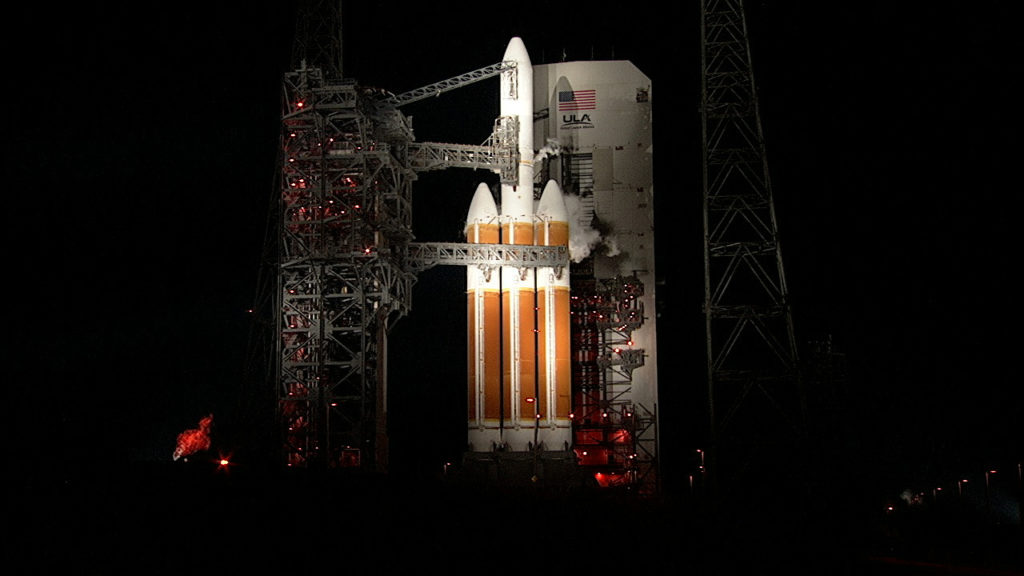 The rocket standing on the pad at Space Launch Complex 37 is a United Launch Alliance Delta IV Heavy configuration. The 233-foot-tall rocket is the world’s second highest-capacity rocket and most powerful rocket currently used by NASA. The launch vehicle consists of three Common Booster Cores, each with an RS-68A engine. Each engine produces 702,000 pounds of thrust for a combined total liftoff thrust of more than 2.1 million pounds.
The rocket standing on the pad at Space Launch Complex 37 is a United Launch Alliance Delta IV Heavy configuration. The 233-foot-tall rocket is the world’s second highest-capacity rocket and most powerful rocket currently used by NASA. The launch vehicle consists of three Common Booster Cores, each with an RS-68A engine. Each engine produces 702,000 pounds of thrust for a combined total liftoff thrust of more than 2.1 million pounds.
A cryogenic second stage, powered by an RL10 engine, is on the center core. It is fueled by liquid hydrogen and liquid oxygen. The boosters are controlled by the second stage avionics system, which provides guidance, flight control and vehicle sequencing functions during the booster phases of flight.
For the first time ever, a solid fuel third stage, provided by Northrup Grumman, is part of the Delta IV Heavy rocket’s configuration. It is attached to the Parker Solar Probe and will help boost the spacecraft into the proper trajectory for its mission.
The Parker Solar Probe was moved from nearby Astrotech Space Operations in Titusville to Launch Complex 37 on July 30. The spacecraft was lifted and attached to the top of the Delta IV Heavy rocket in the Vertical Integration Facility. Parker Solar Probe will be the fastest human-made object in the solar system, traveling at speeds of up to 430,000 miles per hour (700,000 kilometers per hour).
This Delta IV Heavy will carry the Parker Solar Probe, humanity’s first mission to the Sun’s corona, on its journey to explore the Sun’s atmosphere and the solar wind. Launch is scheduled for 3:53 a.m. EDT.


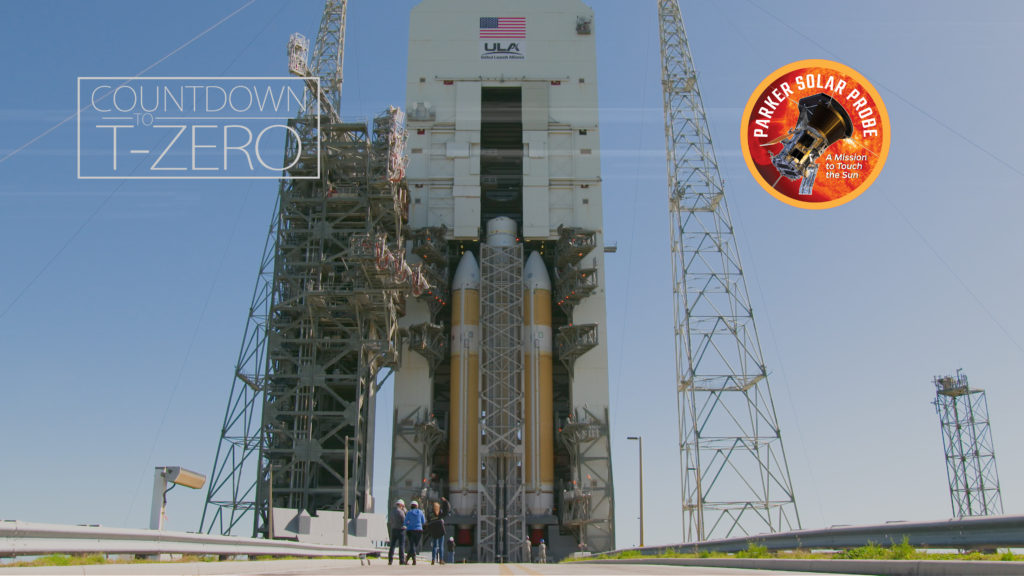 The United Launch Alliance Delta IV Heavy rocket reached another major milestone on the road to T-Zero, as NASA’s Parker Solar Probe is prepared for launch. Stacking the rocket begins with three boosters – the largest components – and continues with the addition of a second stage. A third stage is added to help give NASA’s Parker Solar Probe the extra boost needed to send it far into space and on its way to the Sun. Parker Solar Probe is scheduled to lift off atop the Delta IV Heavy at 3:31 a.m. EDT, at the beginning of a 65-minute launch window, on Aug. 12, from Space Launch Complex 37 at Cape Canaveral Air Force Station in Florida. View the Countdown to T-Zero video at
The United Launch Alliance Delta IV Heavy rocket reached another major milestone on the road to T-Zero, as NASA’s Parker Solar Probe is prepared for launch. Stacking the rocket begins with three boosters – the largest components – and continues with the addition of a second stage. A third stage is added to help give NASA’s Parker Solar Probe the extra boost needed to send it far into space and on its way to the Sun. Parker Solar Probe is scheduled to lift off atop the Delta IV Heavy at 3:31 a.m. EDT, at the beginning of a 65-minute launch window, on Aug. 12, from Space Launch Complex 37 at Cape Canaveral Air Force Station in Florida. View the Countdown to T-Zero video at 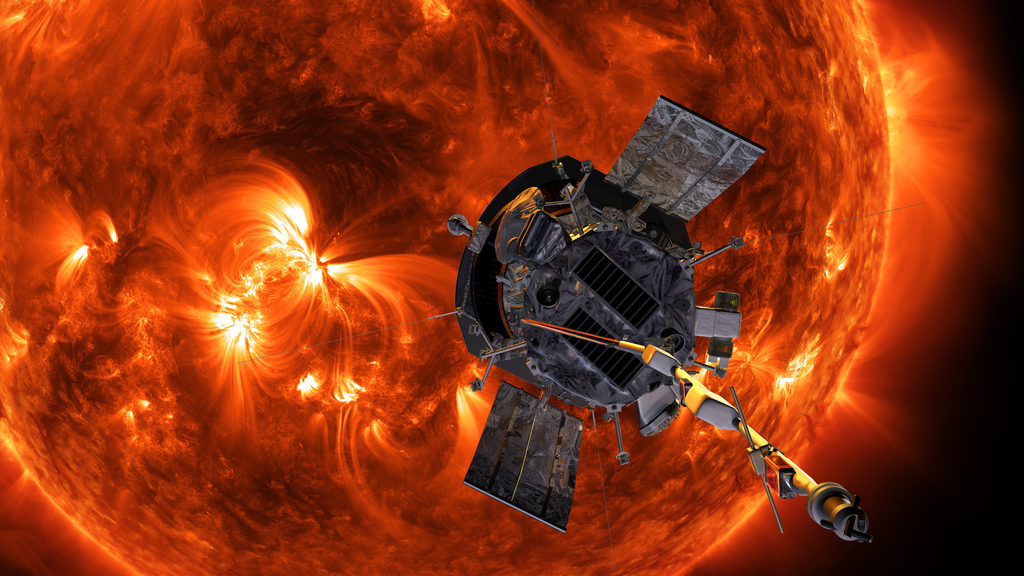
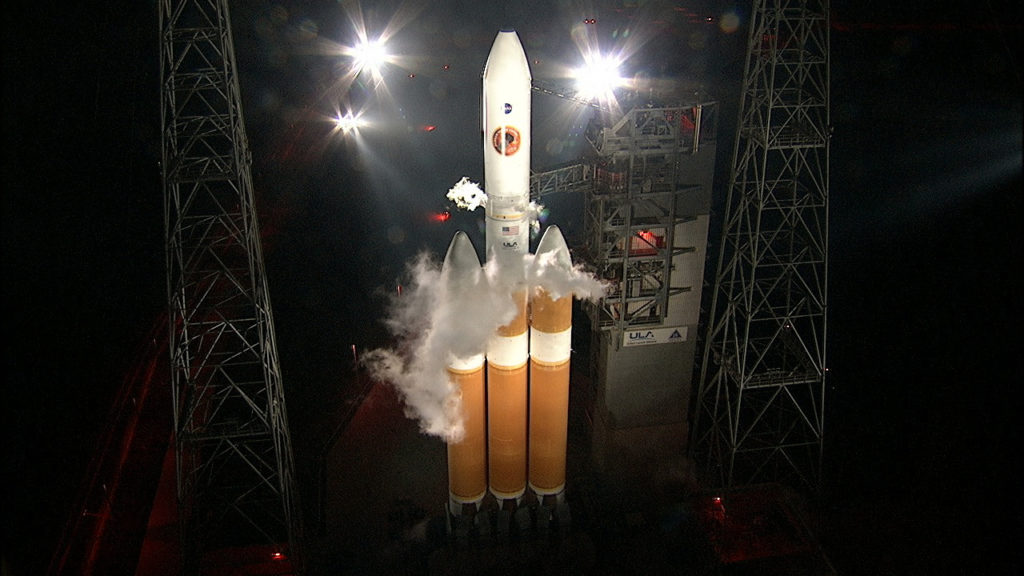 Hello, and welcome back to our coverage of the Parker Solar Probe launch. Everything is proceeding toward launch of the pioneering spacecraft at 3:31 a.m. EDT on a United Launch Alliance Delta IV Heavy rocket from Space Launch Complex 37 at Cape Canaveral Air Force Station in Florida.
Hello, and welcome back to our coverage of the Parker Solar Probe launch. Everything is proceeding toward launch of the pioneering spacecraft at 3:31 a.m. EDT on a United Launch Alliance Delta IV Heavy rocket from Space Launch Complex 37 at Cape Canaveral Air Force Station in Florida.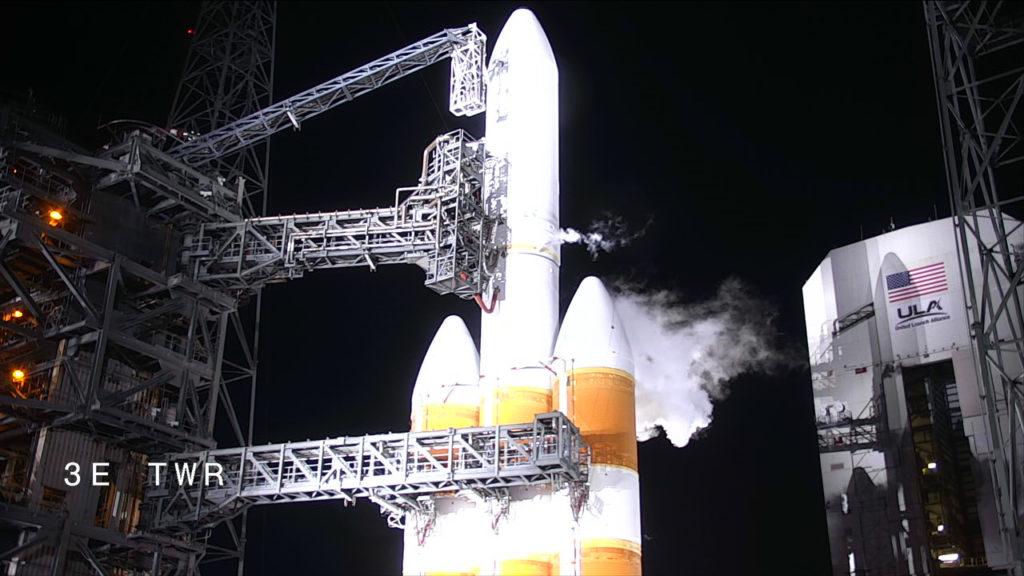 The Parker Solar Probe countdown is underway toward a liftoff at 4:28 a.m. EDT. During the last four minutes of the countdown, the Delta IV Heavy propellant tanks will be brought up to flight pressure, the rocket and spacecraft will be confirmed on internal power, and the Eastern Range and launch managers will perform final status checks. A computerized autosequencer will take over the countdown in order to conduct a host of activities in precise order.
The Parker Solar Probe countdown is underway toward a liftoff at 4:28 a.m. EDT. During the last four minutes of the countdown, the Delta IV Heavy propellant tanks will be brought up to flight pressure, the rocket and spacecraft will be confirmed on internal power, and the Eastern Range and launch managers will perform final status checks. A computerized autosequencer will take over the countdown in order to conduct a host of activities in precise order. The rocket standing on the pad at Space Launch Complex 37 is a United Launch Alliance Delta IV Heavy configuration. The 233-foot-tall rocket is the world’s second highest-capacity rocket and most powerful rocket currently used by NASA. The launch vehicle consists of three Common Booster Cores, each with an RS-68A engine. Each engine produces 702,000 pounds of thrust for a combined total liftoff thrust of more than 2.1 million pounds.
The rocket standing on the pad at Space Launch Complex 37 is a United Launch Alliance Delta IV Heavy configuration. The 233-foot-tall rocket is the world’s second highest-capacity rocket and most powerful rocket currently used by NASA. The launch vehicle consists of three Common Booster Cores, each with an RS-68A engine. Each engine produces 702,000 pounds of thrust for a combined total liftoff thrust of more than 2.1 million pounds.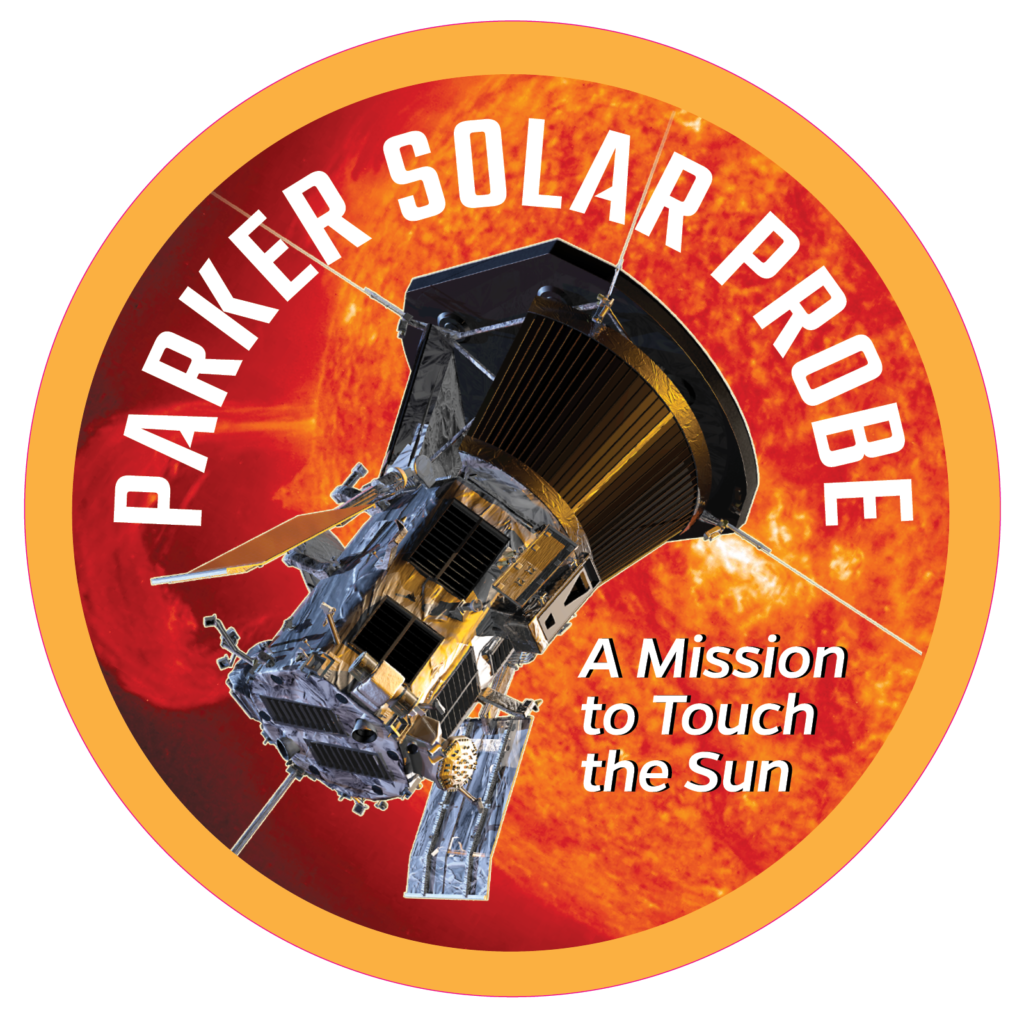 NASA’s Parker Solar Probe will revolutionize our understanding of the Sun, our closest star. The spacecraft will use seven Venus flybys and 24 orbits over nearly seven years to gradually reduce its orbit around the Sun. The spacecraft will come close to 4 percent of the distance from the Sun to the Earth, and closer to the Sun’s surface than any spacecraft before it.
NASA’s Parker Solar Probe will revolutionize our understanding of the Sun, our closest star. The spacecraft will use seven Venus flybys and 24 orbits over nearly seven years to gradually reduce its orbit around the Sun. The spacecraft will come close to 4 percent of the distance from the Sun to the Earth, and closer to the Sun’s surface than any spacecraft before it.